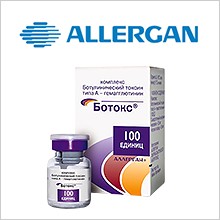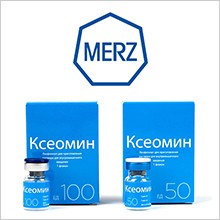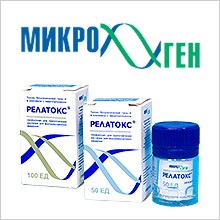Библиотека специалиста
Прошедшие Статьи
n|a
Polyfunctionality of Neurons: The Blocking of Extreme Pathological Afferentation Leads to an Improvement of the Higher Functions of the Brain (ENG)
In this paper, a possible mechanism for improving the functional state of the brain regions main taining locomotor, visual, auditory, and higher functions of the brain during the correction of the generalized spastic syndrome (botulinotherapy with Xeomin) in patients in the vegetative state (VS) is discussed. If the vegetative state is considered as a stable pathological condition (SPC) of the brain, then, in terms of the theory of the structural–functional organization of brain systems with rigid and flexible elements (N.P. Bechtereva), the therapy led to an unbalance of SPC, functional liberation of neurons, redistribution of their functions to ensure other activities, and the formation of new interneuronal connections. Taking into account the func tional variability of neurons (S.V. Medvedev), the blocking of the neuromuscular transmission in spastic mus cles reduces the abnormal afferent and efferent hyperactivity of motor and sensory neuronal circuits, which liberates the brain for other activities. Clinically, this allows considering botulinotherapy of drugresistant muscle spasticity in patients in VS and minimal consciousness not only as a symptomatic treatment but also as indirect neuroprotection.
n|a
Antibody-induced secondary treatment failure in a patient treated with botulinum toxin type A for glabellar frown lines
Botulinum toxin type A (BTX-A) preparations are widely used nonsurgical treatments for facial wrinkles. Higher doses of BTX-A are also used for therapeutic purposes in the treatment of conditions involving increased muscle tone, such as cervical dystonia. The phenomenon of antibody-induced treatment failure is well known in the therapeutic setting, but reports are also emerging following cosmetic use of BTX-A.
n|a
Safety and efficacy of botulinum toxin type A (NT 201-Xeomin) for the treatment of post-stroke lower limb spasticity: a prospective open-label study (ENG)
In recent years, NT 201, a new botulinum toxin type A (BTX-A) free of complexing proteins, has been used for treating several movement disorders, showing safety and efficacy in upper limb spasticity.To assess the safety and evaluate the effects of BTX-A NT 201 free from complexing proteins for the treatment of post-stroke lower limb spasticity evaluating spasticity grade, passive ankle dorsi-flexion motion, and muscle's spasms, as well as its efficacy and rate of satisfaction for patients and for the physicians.
n|a
Effectiveness of switching therapy from complexing protein-containing botulinum toxin type A to a formulation with low immunogenicity in spasticity after stroke: a case report (ENG)
We report here neurophysiological and clinical findings for a 58-year-old man treated with botulinum toxin type A for spasticity after ischaemic stroke, who became a secondary non-responder patient. Subsequent treatment with a different preparation of botulinum toxin type A had a great therapeutic effect on his spasticity. The muscles injected and the dosages were the same for each treatment, but evaluation with the Modified Ashworth Scale after treatment with the second preparation showed a reduction of approximately 2 points compared with the first examination. The clinical results were also supported by extensor digitorum brevis testing of the right muscle, which showed a reduction in compound muscle action potential, whereas it was unchanged in the non-injected muscle. No side-effects were reported, and after 1 year of treatment with this formulation clinical benefits were still evident.
n|a
A guide to dosing in the treatment of cervical dystonia and blepharospasm with Xeomin®: a new botulinum neurotoxin A (ENG)
Xeomin(®) (incobotulinumtoxinA; Merz Pharmaceuticals, Frankfurt am Main, Germany) was first introduced in Germany for movement disorders in 2005. In 2010, it was approved for use in the United States by the FDA for the treatment of cervical dystonia (CD) and blepharospasm. It is a unique botulinum type A formulation free of any complexing proteins and contains only the pure 150 kD neurotoxin. Thus, the formation of neutralizing antibodies is not induced even after long-term treatment. The purpose of this report is to review the safety profile and dosing schedule for Xeomin for the treatment of CD and blepharospasm. The recommended dose for patients with CD is 120 U/treatment, with administration intervals normally between 3 and 6 months. However, clinical studies have found Xeomin to be safe and effective at doses up to 400 U in both previously treated and treatment-naïve patients.
n|a
A new treatment for focal dystonias: incobotulinumtoxinA (Xeomin®), a botulinum neurotoxin type A free from complexing proteins (ENG)
These studies have also suggested that incobotulinumtoxinA is associated with a lower risk for stimulating antibody formation than onabotulinumtoxinA. In phase 3 noninferiority trials, incobotulinumtoxinA demonstrated significant improvements in CD and BSP symptoms in both primary and secondary measures, compared with baseline, and met criteria for noninferiority versus onabotulinumtoxinA. In placebo-controlled trials, incobotulinumtoxinA also significantly improved the symptoms of CD and BSP, with robust outcomes in both primary and secondary measures. The use of incobotulinumtoxinA has been well tolerated in all trials, with an adverse event profile similar to that of onabotulinumtoxinA.
n|a
Efficacy and safety of higher doses of botulinum toxin type A NT 201 free from complexing proteins in the upper and lower limb spasticity after stroke (ENG)
Botulinum toxin type A (BTX-A) represents the gold standard therapy for focal spasticity after stroke, with low prevalence of complications, reversibility, and efficacy in reducing spastic hypertonia. Current guidelines suggest the employment of a dosage up to 600 units (U) of BTX-A to treat spasticity after stroke, to avoid important adverse effects and the development of antibodies against the neurotoxin. In recent years, NT 201, a new BTX-A free of complexing proteins, has been used for treating several movement disorders, showing safety and efficacy in upper limb spasticity. In a prospective, non-randomized, open-label study, we studied the efficacy and safety of higher doses of BTX-A NT 201 (up to 840 U) in 25 consecutive patients with upper and lower limb spasticity after stroke, evaluated at 30 and 90 days after injections. Before and after the treatment, the grade of spasticity, the disability, and spasticity-related pain were extensively measured. After 30 days of follow-up, a great reduction of spasticity and pain with improvement of disability was observed. The effects were still present at 90 days of follow-up. No major adverse events were observed.
n|a
An early botulinum toxin A treatment in subacut stroke patients may prevent a disabling finger flexor stiffness six months later: a randomized controlled trial (ENG)
The study asked whether an early botulinum toxin A (BTX-A) injection in subacute stroke patients may prevent a disabling finger flexor stiffness six months later.
n|a
Prospective analysis of neutralising antibody titres in secondary non-responders under continuous treatment with a botulinumtoxin type A preparation free of complexing proteins— a single cohort 4-year follow-up study (ENG)
In long-term botulinum neurotoxin treatment, loss of therapeutic efficacy may occur due to neutralising antibody formation. Preliminary results with incobotulinumtoxinA, a preparation free of complexing/accessory proteins, have indicated a low antigenicity. We hypothesised that continuous treatment with this botulinum neurotoxin preparation would not result in an increase in neutralising antibody titres (NABTs) in patients with pre-existing NABTs
n|a
Stability of botulinum neurotoxin type A, devoid of complexing proteins (ENG)
Botulinum toxin type A is a complex composed of the biologically active neurotoxin, several hemagglutinins and other nontoxic proteins. After intramuscular injection these complexing proteins do not have any therapeutic effect. However, they protect the neurotoxin from harsh environmental conditions, e.g., low intragastral pH after oral ingestion. NT201, a BoNT/A drug product devoid of complexing proteins was tested in real-time and accelerated stability studies. NT201 was found to be stable without refrigeration for 48 months and even not affected by short-term temperature stress up to 60°C, demonstrating that complexing proteins are not required for the stability of BoNT/A preparations.








